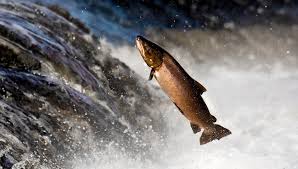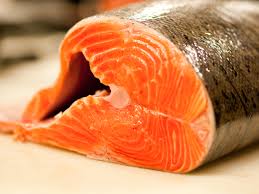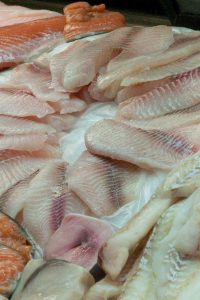Feeding the Food Allergic Dog — Naturally??
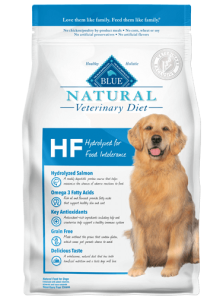 My daily dose of inspiration arrived today, in the form of an advertisement in a veterinary publication from the Blue (formerly Blue Buffalo) pet food company. They were promoting their latest offering, a line of natural veterinary prescription feed. I call these products feed, because that is the approved term for what animals eat. Only humans (or those lucky animals who eat “people food”) can correctly be said to eat food. Crazy, right? But that’s not what prompted this blog…
My daily dose of inspiration arrived today, in the form of an advertisement in a veterinary publication from the Blue (formerly Blue Buffalo) pet food company. They were promoting their latest offering, a line of natural veterinary prescription feed. I call these products feed, because that is the approved term for what animals eat. Only humans (or those lucky animals who eat “people food”) can correctly be said to eat food. Crazy, right? But that’s not what prompted this blog…
It’s the word natural. Or as they put on the label, NATURAL. Dictionary.com defines natural as:
When I think of natural salmon, I think of these:
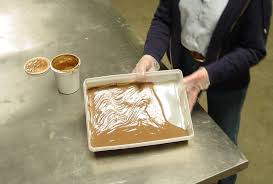 I do not think of this, the first ingredient of Blue HF, which is hydrolyzed salmon protein concentrate. Is this natural? Does that look like food to you? Wonder how it might be made? Just visit Ridgedale Permaculture, where they show you their process of making fish hydrolysate, step by step. (Fair warning – it’s not a pretty process.) And if you make it down the page, you will see their first recommended use for fish hydrolysate is as a compost “booster” and plant fertilizer!
I do not think of this, the first ingredient of Blue HF, which is hydrolyzed salmon protein concentrate. Is this natural? Does that look like food to you? Wonder how it might be made? Just visit Ridgedale Permaculture, where they show you their process of making fish hydrolysate, step by step. (Fair warning – it’s not a pretty process.) And if you make it down the page, you will see their first recommended use for fish hydrolysate is as a compost “booster” and plant fertilizer!
So, what are the full ingredients of this “natural” prescription veterinary diet? According to the Blue website, the food contains:
Salmon Hydrolysate (source of Omega 3 Fatty Acids), Pea Starch, Potatoes, Peas, Pea Protein, Canola Oil (source of Omega 6 Fatty Acids), Potato Starch, Natural Flavor, Pea Fiber, Flaxseed (source of Omega 3 and 6 Fatty Acids), Calcium Carbonate, Dicalcium Phosphate, Pumpkin, Dried Kelp, Fish Oil (source of Omega 3 Fatty Acids), Dehydrated Alfalfa Meal, Dried Chicory Root, Salt, Choline Chloride, Caramel Color, Vitamin E Supplement, DL-Methionine, Zinc Amino Acid Chelate, Mixed Tocopherols (a natural preservative), L-Tryptophan, Iron Amino Acid Chelate, L-Ascorbyl-2-Polyphosphate (source of Vitamin C), Parsley, Blueberries, Cranberries, Barley Grass, Yucca Schidigera Extract, Turmeric, Oil of Rosemary, L-Carnitine, L-Lysine, Copper Amino Acid Chelate, Manganese Amino Acid Chelate, Nicotinic Acid (Vitamin B3), Taurine, Calcium Pantothenate (Vitamin B5), Biotin (Vitamin B7), Vitamin A Supplement, Ferrous Sulfate, Thiamine Mononitrate (Vitamin B1), Zinc Sulfate, Riboflavin (Vitamin B2), Vitamin D3 Supplement, Vitamin B12 Supplement, Pyridoxine Hydrochloride (Vitamin B6), Calcium Iodate, Copper Sulfate, Dried Yeast, Dried Enterococcus faecium fermentation product, Dried Lactobacillus acidophilus fermentation product, Copper Amino Acid Chelate, Dried Aspergillus niger fermentation extract, Dried Trichoderma longibrachiatum fermentation extract, Dried Bacillus subtilis fermentation extract, Manganese Sulfate, Folic Acid (Vitamin B9), Sodium Selenite.
My approach to feeding dogs is quite different, whether they have food allergies or intolerances or not. I want to take the mystery out of what is being fed. If I am feeding fish, it will look like this:
